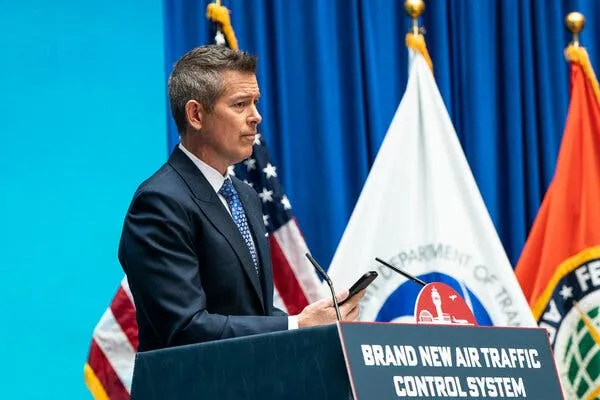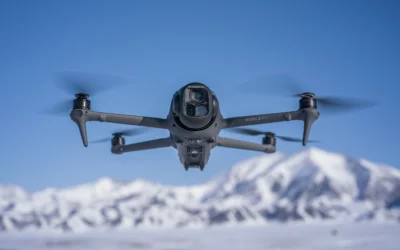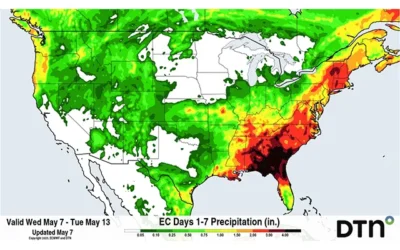Flights Could Be Disrupted Across U.S.
In a recent announcement, U.S. Transportation Secretary Pete Buttigieg warned that air travel disruptions may become a recurrent issue across the nation, particularly as Newark Liberty International Airport suffers its third major system outage in less than two weeks. This troubling trend is raising concerns about the overall reliability of the country’s air traffic control systems and the impact on travelers.
The Newark Liberty Airport Outages
On several occasions in the past few weeks, Newark Liberty Airport—the first major airport in the U.S. to open in 1928—has experienced significant technical difficulties. These outages have affected hundreds of flights, stranding passengers and causing chaos for airlines and travelers alike.
The most recent outage caused widespread delays and cancellations, significantly impacting travelers who rely on this essential hub. Newark, located just 15 miles from Manhattan, is a critical gateway for both national and international flight operations.
FAA’s Emergency Task Force
In response to these persistent issues, the Federal Aviation Administration (FAA) has launched an emergency task force dedicated to addressing these outages and ensuring the safe operation of flights in and out of Newark. This task force is tasked with exploring the underlying issues that led to these technical failures and implementing solutions to prevent similar incidents in the future.
The FAA has stated that the safety of air travel is their top priority. In light of the recent disruptions, they have committed to rigorous evaluations and tests of the systems in place, hoping to reassure both airlines and travelers.
The Broader Impact on Air Travel
These technical challenges at Newark Liberty are symptomatic of broader systemic vulnerabilities within the U.S. air transportation network. Airlines across the country have had to recalibrate their schedules as a direct result of these incidents, leading to financial losses and consumer dissatisfaction.
Whenever there are delays or cancellations, airlines face significant pressure. Passengers are quick to voice their complaints about canceled flights, extra fees for rescheduling, and the overall inconvenience. The ripple effects of Newark’s outages are felt well beyond New Jersey, as flights are continually rerouted, leading to delays in other similarly congested hubs.
The Public’s Reaction
As these outages unfold, public frustration is mounting. Social media platforms have become a hotspot for travelers to share their experiences, vent about long wait times, and express their growing concerns over the reliability of air travel. As travel resumes to pre-pandemic levels, passengers are not only dealing with crowded airports; they are also facing persistent uncertainty regarding on-time departures.
“I expected more from the airlines and the FAA, especially as travel returns to normal,” said John Carter, a frequent traveler who faced a lengthy delay at Newark during a recent trip. “I just don’t understand why such critical infrastructure isn’t more reliable.”
Government Accountability
The repeated system failures at Newark have raised questions about government accountability and investment in aviation infrastructure. Critics argue that decades of underfunding and neglect may be to blame for the current turmoil. Many industry experts have long called for significant upgrades to the aging aviation systems to improve efficiency and safety.
Congress has held hearing sessions to discuss transportation infrastructure and ensure the nation’s air travel systems are up to par with growing demands. The ongoing problems at Newark have intensified these discussions, reiterating the need for investment and reform.
Looking Ahead: What’s Next?
As the FAA addresses the Newark situation, experts suggest that the agency will need to take a comprehensive approach to not only fix current issues but also develop strategies that will enhance the resilience of the entire air traffic control system.
Furthermore, airlines may also need to prepare for possible operational adjustments. This may include increased flight buffers or changes to scheduling practices to mitigate impacts from any future outages at Newark or other major airports.
The Role of Technology
Beyond just manual fixes, technology must play a pivotal role in remedying the ongoing problems. The FAA has hinted at exploring innovative technologies that could streamline operations, enhance communication systems, and provide real-time data on air traffic. Many experts believe that investing in more robust and advanced technology infrastructures can mitigate future risks.
Customer Service and Communication
As airlines and the FAA grapple with these challenges, effective communication with passengers is paramount. Travelers deserve timely and transparent information regarding their flights. Airlines should ramp up their customer service operations, especially during these turbulent times, to better assist those affected by delays and cancellations.
Creating dedicated communication channels through social media or mobile applications could help alleviate some of the frustrations travelers are experiencing. Keeping customers informed throughout the process can significantly improve their experiences, even in the face of disruptions.
Conclusion
While the recent outages at Newark Liberty Airport highlight immediate concerns related to air travel, they also shed light on the larger systemic issues affecting the entire U.S. aviation landscape. As the FAA and various stakeholders work to rectify the current situation, there’s a shared hope for enhanced safety, reliability, and efficiency moving forward in the aviation sector.
With the holiday season fast approaching, it is crucial for all parties involved to act swiftly to restore confidence in air travel. Passengers expect safe and timely journeys, and the concerted efforts of the FAA, airlines, and policymakers can help ensure that these expectations are met.







